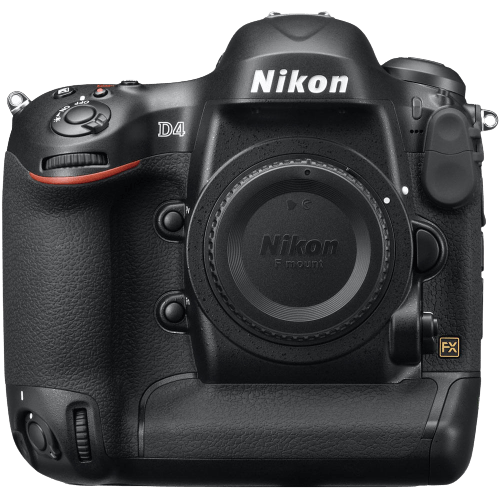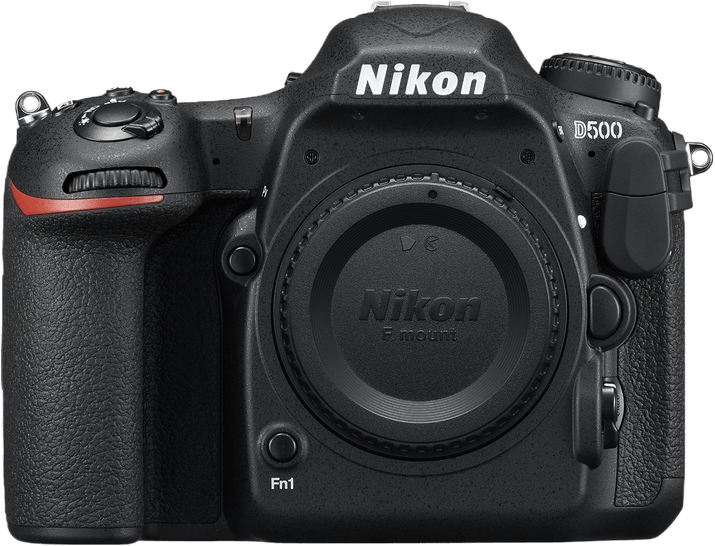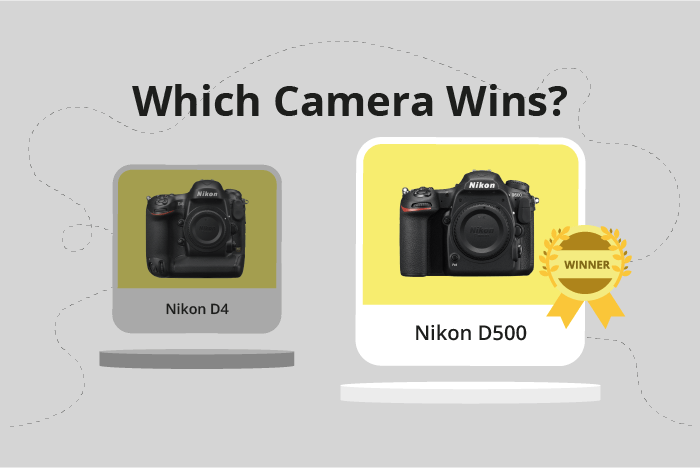Nikon D4 vs D500 Comparison
Nikon D4

Nikon D500

The Nikon D500 emerges as the winner with a score of 75/100, outperforming the Nikon D4, which scored 63/100. Both cameras share the DSLR camera type and were announced on January 6th, four years apart. The D500 was released in 2016, making it a more recent model compared to the 2012 release of the D4.
The D500 boasts a lower launch price of $2000, compared to the D4’s $5999, making it a more affordable option. Size-wise, the D500 is more compact with dimensions of 147x115x81mm, while the D4 measures 160x157x91mm. Additionally, the D500 is lighter, weighing 860g, as opposed to the D4, which weighs 1340g.
Despite its higher score, the D4 does not have any significant advantages over the D500. It is clear that the more recent and affordable Nikon D500 is a better choice due to its compact size and lighter weight.
Nikon D4 vs D500 Overview and Optics
The Nikon D500 prevails over the Nikon D4 in the optics comparison, scoring 69/100 as opposed to the D4’s 63/100. Both cameras share several common specifications, such as a CMOS sensor type, no image stabilization, and Nikon F lens mounts. However, the D500 surpasses the D4 in certain areas, while the D4 also has its advantages.
The Nikon D500 boasts a higher megapixel count of 20.9, compared to the D4’s 16.2, resulting in sharper and more detailed images. Additionally, it features an Expeed 5 processor, providing faster image processing and better overall performance than the D4’s Expeed 3 processor. Despite having a lower DXOMARK sensor score of 84 compared to the D4’s 89, the D500’s superior megapixel count and processor make it the better choice for optics.
On the other hand, the Nikon D4 has a full-frame sensor, which contributes to its higher DXOMARK score and offers advantages such as better low-light performance and a shallower depth of field. The D4 also has a slightly faster shooting speed of 11 frames per second, compared to the D500’s 10, which may be an important consideration for action or sports photography.
Taking these factors into account, the Nikon D500 emerges as the superior option for optics due to its higher megapixel count and better processor. However, the Nikon D4 remains a strong contender for those prioritizing low-light performance and faster shooting speeds. Ultimately, the choice between these cameras will depend on the specific needs and preferences of the photographer.
Nikon D4 vs D500 Video Performance
The Nikon D500 outperforms the Nikon D4 in video capabilities with a score of 70/100 compared to the D4’s 57/100. Both cameras share some common specifications, such as a maximum video frame rate of 30fps and built-in time-lapse functionality. However, the D500 takes the lead with its higher video resolution and dimensions.
The Nikon D500’s superior video quality is due to its 4K resolution, resulting in video dimensions of 3840 x 2160. This higher resolution allows for more detail and clarity in videos, making it a better choice for videographers and content creators who prioritize high-quality footage.
On the other hand, the Nikon D4 has a maximum video resolution of Full HD, with dimensions of 1920 x 1080. While this is still considered good quality for most purposes, it falls short when compared to the D500’s 4K capabilities. However, the D4 may be more suitable for those who do not require the highest video resolution and prefer a camera with other strengths, such as its general specifications and optics.
Considering the video capabilities of both cameras, the Nikon D500 is the clear winner due to its 4K resolution and larger video dimensions. This camera caters to those who prioritize video quality in their work. The Nikon D4, while still offering good video quality, is better suited for those who do not require the highest resolution and may prefer a camera with other strong features.
Nikon D4 vs D500 Features and Benefits
The Nikon D500 emerges as the winner in terms of features, scoring 87 out of 100, compared to the Nikon D4’s score of 57. Both cameras share some specifications, such as the 3.2-inch screen size and lack of GPS. However, the D500 outperforms the D4 in various areas that contribute to its higher feature score.
The D500 has a screen resolution of 2,359,000 dots, significantly higher than the D4’s 921,000 dots, providing a sharper and clearer display. Additionally, the D500 has a touchscreen, making it more user-friendly and efficient to navigate through settings and review images. The D4, on the other hand, does not have a touchscreen. Another advantage of the D500 is its flip screen, which allows for flexible shooting angles and easier framing of shots. The D4 lacks this feature.
In terms of connectivity, the D500 has both Wi-Fi and Bluetooth capabilities, enabling users to transfer images and control the camera remotely. The D4 does not have these connectivity options. Despite these advantages, the D4 has its own strengths, but they are not related to features, as it scored lower in this category.
Considering the differences in features, the Nikon D500 stands out as the better option, offering higher screen resolution, touchscreen, flip screen, Wi-Fi, and Bluetooth capabilities. While the Nikon D4 has its merits, they do not lie within the realm of features. Therefore, the D500 is the superior choice for those prioritizing advanced features in their camera selection.
Nikon D4 vs D500 Storage and Battery
The Nikon D4 outperforms the Nikon D500 in storage and battery with a score of 87/100 to 79/100. Both cameras have two memory card slots, but the D4 accepts Compact Flash and XQD cards, while the D500 takes SD/SDHC/SDXC (UHS-II compatible) and XQD cards.
The D4 has a superior battery life, providing 2600 shots per charge compared to the D500’s 1240 shots. The D4 uses an EN-EL18 battery, while the D500 utilizes an EN-EL15 battery. Neither camera offers USB charging.
Though the D500 has a lower score, it supports more versatile memory card options with SD/SDHC/SDXC compatibility. This may be beneficial for photographers who own different memory card types.
While both cameras provide ample storage options and decent battery life, the Nikon D4’s extended battery life makes it a stronger contender in this category. The D500’s broader memory card compatibility is its main advantage, but it falls short in overall storage and battery performance.
Nikon D4 vs D500 – Our Verdict
Are you still undecided about which camera is right for you? Have a look at these popular comparisons that feature the Nikon D4 or the Nikon D500:

